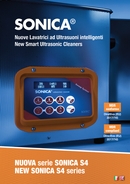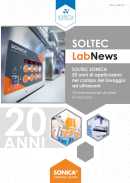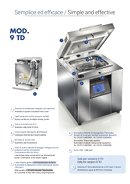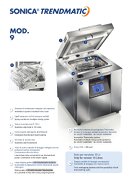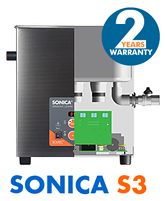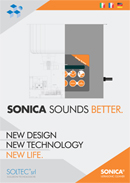Technical
When can I use degas function with SONICA EP ultrasonic cleaners series?
Submitted by soltec-admin on Mon, 05/03/2010 - 17:01
in
The degas function is used for degassing the cleaning liquids and allows some sound/chemical applications to be adopted, e.g. degassing of high polymer solvent (HPL). During this function, the detergent solutions are released from air bubbles which prevent effective propagation of the ultrasound waves. Whenever a new detergent or water is used, a degassing cycle of approximately two minuts is recommended in order to bring the air bubbles to the surface. Higher temperatures not only affect the quality of cavitation, but also help to degas the liquid and improve the chemical cleaning action.
- Read more
- 28382 reads
-

What is a weak acid?
Submitted by soltec-admin on Mon, 05/03/2010 - 17:00
in
A weak acid is an acid that dissociates incompletely in water and is a weak electrolyte.
What is a strong acid?
Submitted by soltec-admin on Mon, 05/03/2010 - 17:00
in
A strong acid is an acid that dissociates completely in water and is a strong electrolyte.
What is a salt?
Submitted by soltec-admin on Mon, 05/03/2010 - 16:59
in
A salt is an ionic compound formed in an acid-base neutralization reaction.
What is an reducing agent?
Submitted by soltec-admin on Mon, 05/03/2010 - 16:58
in
A reducing agent is a substance that cause a reduction by donating an electron.
What is a compound?
Submitted by soltec-admin on Mon, 05/03/2010 - 16:57
in
A compound is a chemical substance composed of more than one kind of element.
What is Chemistry?
Submitted by soltec-admin on Mon, 05/03/2010 - 16:57
in
it is the study of the composition, properties, and trasformation of matter.
What is corrosion?
Submitted by soltec-admin on Mon, 05/03/2010 - 16:56
in
The corrosion is the oxidative deterioration of a metal, such as the conversion of iron to rust.The rusting of iron requires both oxygen and water. The ultrasonic cavitation, in presence of strong acid or highly alkalyne solutions such as sodium hypochlorite, can cause highly accelerated corrosion even in stainless steel.
Who can benefit from ultrasound cleaning?
Submitted by soltec-admin on Mon, 05/03/2010 - 16:55
in
Dental surgeries, hospitals, chemical laboratories, manufacturing industries, the optical industry, the jewellery industry, the defence and aerospace industry.
What are the advantages of SONICA sweep system?
Submitted by soltec-admin on Mon, 05/03/2010 - 16:54
in
SONICA sweep system technology gives: faster cleaning,damage free cleaning, increased distribution of ultrasound energy, better cleaning, improved cavitation

